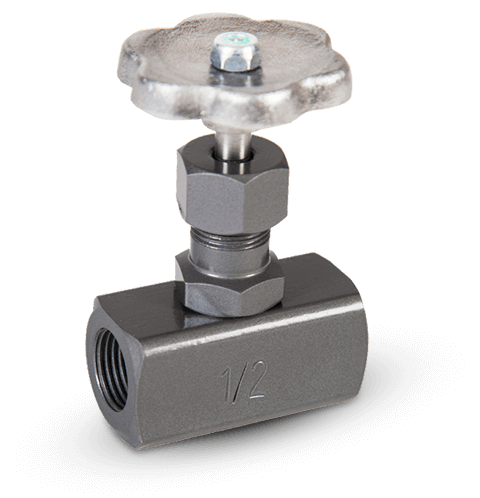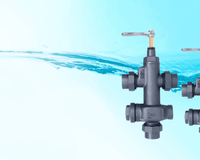Needle valve: Find out what it is and see how it works

Have you ever heard of a needle valve? In short, this type of valve works in a similar way to a common globe valve, but is most commonly used when you want to achieve fine-tuned flow control.
This valve can be used in all industrial sectors, especially when applications require high-precision flow control. But do you know how a needle valve works?
Check out our text today and learn what a needle valve is, see how it works and also its main differences when compared to other types of valves.
What is a needle valve?
The Needle Valve is a type of valve adopted by the industrial sector when there is a need for fine flow control.
It received this name because it was designed with a very thin type of needle, made of metal. Most of the time, they are produced in stainless steel, bronze or other steel alloys.
Therefore, it can be used in different industrial sectors, mainly in high-precision flow control applications. The sealing system of this type of valve is made of the metal itself, by means of a handwheel and a stem.
In the oil industry, for example, this valve is used to control the flow of fluid passing through a given pipeline with high precision. Its use allows the control of the flow of water, fluids, steam, mineral, synthetic and vegetable oil, and air.
Operation of needle valve in industry
The operation of the needle valve is relatively simple and is similar to other types of valves.
When closed, the needle fits into a ring in the valve body. As the valve is opened, the needle opens into an annular passage (is it an annular passage? or an annular) around it.
It is worth noting that the degree of adjustment will be a characteristic dependent on the smoothness of the needle angle and, consequently, on the relationship between length and diameter, where the greater the length, the greater the degree of adjustment.
The ability of valves to control flow more accurately allows them to maintain optimal motion, especially in cases where motion needs to be maintained with little or no modification.
Needle Valve vs. Other Valves: Are There Differences?
As we have seen so far, the needle valve is similar to other types of valves, such as the globe valve , which is also responsible for controlling the flow, strangling the passage of fluid, in addition to performing the blockage.
However, there are some significant differences that make this valve unique.
The first difference between it and other models and types is the closing wedge. In the needle valve, the closing wedge is of the “plug” or needle type, and not discs, that is, the length is greater than its own diameter.
We have already mentioned the second difference in the text. When compared to other models, the needle valve has a more specific function, as it allows the flow to be regulated with much greater precision.
A third difference is in the name “Needle” that this valve has. This name comes precisely from the geometry of its shutter, which has the configuration of a cone with a very thin end, known as a conical shutter with a thin base.
The passage diameter at the body seat is also usually much smaller in needle valves compared to other valves.
Finally, the stem has a very fine thread pitch. Therefore, when activated to open or close, this valve opens gradually and more slowly.
All these scores, together, make the industry more sensitive to flow adjustments, which is the main characteristic of this valve.
MBX 2000 lb Needle Valve
The MBX 2000-pound needle valve is one of the leading valves on the market with the features mentioned in the text. It is recommended for fine flow control needs in vacuum systems.
The valve has a conical shutter with a very fine tip, and is widely used to control the flow of water, mineral, synthetic and vegetable oils in fluids, steam and air.
MBX 2000 lb Needle Valve Technical Data
- Valve material: Carbon steel SAE – 1045;
- Connections: BSP/NPT thread;
- Dimensions: ½”;
Want to know more? Click here and discover the needle valve manufactured by MBX.






